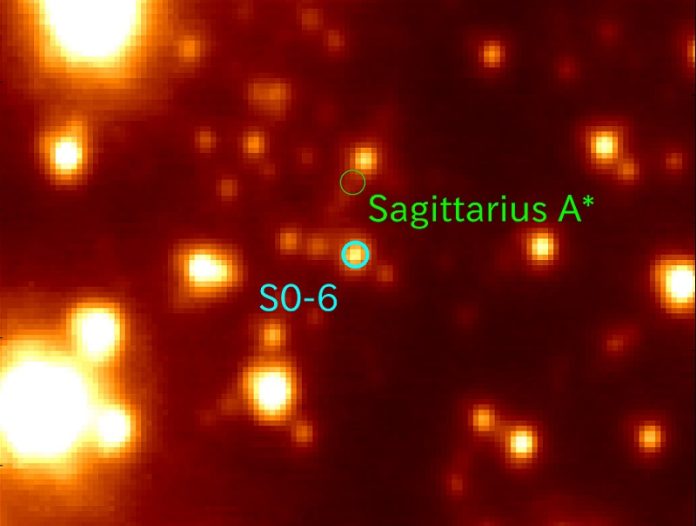
A new study has uncovered a fascinating story about a star’s long journey through space.
Researchers have found a star, named S0-6, near the supermassive black hole at the heart of our Milky Way galaxy.
The astonishing part? This star isn’t originally from our galaxy at all!
This discovery, shared in the Proceedings of the Japan Academy, Series B, marks the first time a star from outside our galaxy has been spotted so close to our massive black hole, Sagittarius A*.
Sagittarius A* is a well-known supermassive black hole situated in the middle of the Milky Way.
Numerous stars surround it, but its powerful gravity makes it too difficult for stars to form in its immediate neighborhood.
This means all the stars around it must have been born elsewhere and later migrated towards it. But how far did they come? That’s the big question.
An international research team led by Shogo Nishiyama from Miyagi University of Education took on this mystery.
They spent eight years using the Subaru Telescope to observe S0-6, a star located just 0.04 light-years away from Sagittarius A*. Through their observations, they discovered some remarkable facts about this star.
S0-6 is quite old, about 10 billion years, and its chemical makeup matches that of stars from smaller galaxies outside our Milky Way, like the Small Magellanic Cloud or the Sagittarius dwarf galaxy.
This suggests that S0-6 was born in a now-vanished small galaxy that once orbited the Milky Way and eventually got absorbed by it. This idea is groundbreaking because it’s the first time we have evidence to suggest that some stars near our galaxy’s central black hole actually originated outside the Milky Way.
The journey of S0-6 to get to where it is now is nothing short of epic. In its 10-billion-year lifespan, the star has traveled over 50,000 light-years, and probably even more, to reach the vicinity of Sagittarius A*.
It’s unlikely that S0-6 took a direct route to the black hole; instead, it probably spiraled down slowly towards the center of the galaxy.
Despite this groundbreaking discovery, there are still many unanswered questions. Nishiyama and his team are curious about several things.
Did S0-6 really come from outside the Milky Way? Did it make this incredible journey all by itself, or were there companion stars that traveled with it? These are some of the mysteries they hope to solve with further research.
This discovery not only sheds light on the history of S0-6 but also offers a glimpse into the complex dynamics of stars and galaxies.
It shows us how galaxies can interact and merge, bringing stars from far away into new celestial neighborhoods.
It’s a reminder of the vastness of space and the incredible journeys that objects in the universe can undertake. As we continue to study stars like S0-6, we uncover more about our galaxy’s past and the intricate dance of celestial bodies in the cosmos.



